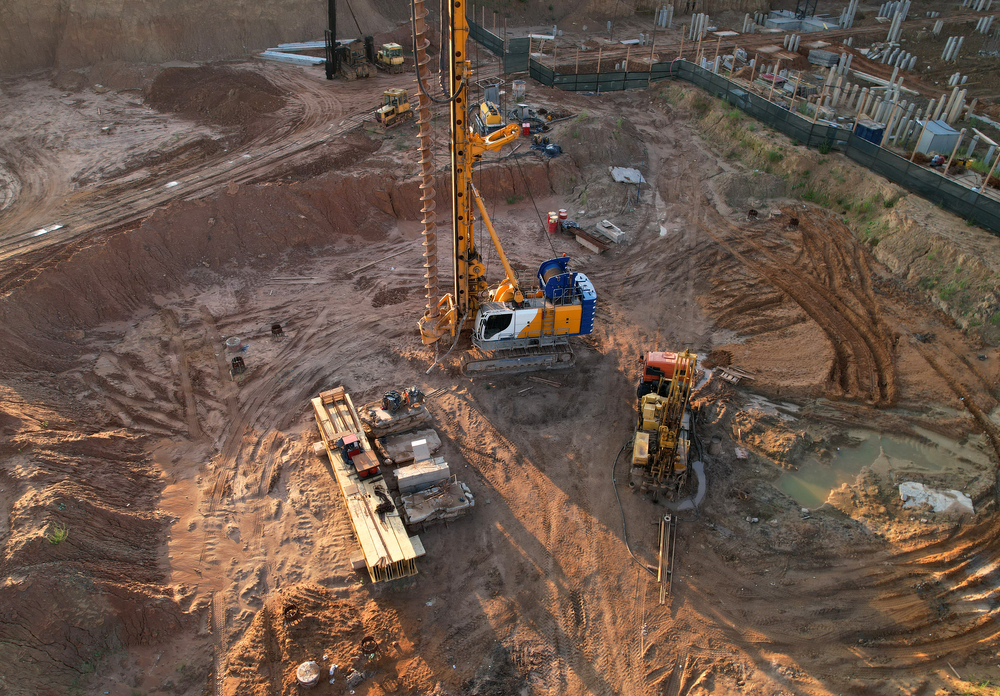Indicators on Geotheta You Should Know
Indicators on Geotheta You Should Know
Blog Article
Some Known Factual Statements About Geotheta
Table of ContentsThe Of GeothetaSome Of GeothetaGetting My Geotheta To WorkThe 5-Minute Rule for GeothetaIndicators on Geotheta You Need To Know

They perform site investigations, gather examples, carry out lab tests, and analyze data to review the suitability of the ground for building and construction jobs - Engineer of Record. Based on their findings, geotechnical engineers provide suggestions for structure style, incline security, preserving structures, and mitigation of geotechnical threats. They team up with various other professionals, such as designers, structural engineers, and building and construction teams, to make sure that geotechnical considerations are integrated right into the general job design and implementation
By analyzing the habits and properties of dirt and rock, they can recognize prospective geotechnical threats such as landslides, soil negotiation, or incline instability. Their know-how helps prevent failures or mishaps that can threaten lives and residential property. Right here are some detailed obligations and duties of a geotechnical designer: Site Examination: Geotechnical engineers conduct site examinations to collect information on subsurface problems.
They interpret the data to understand the properties and actions of the soil and rock, including their stamina, leaks in the structure, compaction attributes, and groundwater problems. Geotechnical Evaluation and Style: Geotechnical engineers evaluate the data gathered during website investigations to assess the stability and viability of the site for building and construction jobs. They carry out geotechnical estimations and modeling to review elements such as bearing capability, negotiation, incline security, lateral planet pressures, and groundwater flow.
The Ultimate Guide To Geotheta
Structure Design: Geotechnical engineers play an essential role in designing foundations that can securely support the designated framework. They analyze the soil problems and load requirements to establish the proper foundation type, such as shallow structures (e.g., grounds), deep structures (e.g (https://www.intensedebate.com/people/geotheta)., piles), or specialized techniques like soil improvement. They take into consideration variables such as negotiation restrictions, birthing ability, and soil-structure interaction to create ideal foundation designs
They evaluate construction plans, monitor website activities, and conduct area examinations to verify that the layout suggestions are followed. If unpredicted geotechnical issues arise, they assess the circumstance and offer recommendations for removal or modifications to the design. Risk Analysis and Mitigation: Geotechnical engineers evaluate geotechnical threats and dangers connected with the project site, such as landslides, liquefaction, or dirt erosion.

Collaboration and Communication: Geotechnical designers function carefully with various other specialists included in a project, such as designers, architectural engineers, and construction groups. Efficient communication and collaboration are important to incorporate geotechnical factors to consider into the overall project style and building and construction process. Geotechnical engineers provide technical know-how, answer queries, and ensure that geotechnical requirements are fulfilled.
Geotheta - Questions
Below are some sorts of geotechnical engineers: Structure Designer: Structure designers specialize in making and assessing foundations for structures. They analyze the dirt conditions, load demands, and website attributes to establish the most ideal foundation type and layout, such as shallow structures, deep foundations, or specialized strategies like pile foundations.
They review the aspects affecting slope stability, such as dirt buildings, groundwater conditions, and incline geometry, and develop techniques to avoid slope failures and minimize threats. Earthquake Designer: Earthquake designers concentrate on evaluating and creating structures to withstand seismic forces. They evaluate the seismic danger of a website, assess dirt liquefaction capacity, and develop seismic style standards to ensure the security and durability of structures during quakes.
They perform area screening, gather examples, visit this page and examine the gathered information to identify the dirt buildings, geologic formations, and groundwater conditions at a site. Geotechnical Instrumentation Designer: Geotechnical instrumentation engineers concentrate on surveillance and gauging the behavior of dirt, rock, and structures. They install and maintain instrumentation systems that keep an eye on variables such as dirt settlement, groundwater levels, incline movements, and structural displacements to assess efficiency and offer very early cautions of potential concerns.
Geotheta for Dummies
They conduct examinations such as triaxial tests, combination examinations, direct shear tests, and permeability examinations to collect data for geotechnical evaluation and layout. Geosynthetics Engineer: Geosynthetics engineers focus on the layout and application of geosynthetic products, such as geotextiles, geogrids, and geomembranes. They make use of these products to improve soil security, enhance slopes, give water drainage solutions, and control erosion.
They have a tendency to be investigative individuals, which means they're intellectual, reflective, and investigative. They are curious, methodical, sensible, logical, and logical. Several of them are also social, suggesting they're kind, generous, cooperative, person, caring, valuable, understanding, tactful, and pleasant. Does this seem like you? Take our complimentary career test to learn if geotechnical designer is one of your top career suits.
In the office setting, geotechnical engineers use specialized software application devices to carry out calculations, create styles, and assess data. They prepare reports, testimonial job specifications, connect with customers and employee, and coordinate task tasks. The workplace setup provides a favorable setting for research, evaluation, and partnership with other professionals associated with the project.
The Basic Principles Of Geotheta
They frequently visit project websites to perform site examinations, analyze geotechnical conditions, and collect data for evaluation. These brows through involve taking a trip to different places, occasionally in remote or challenging terrains. Geotechnical designers might execute dirt tasting, conduct tests, and screen construction tasks to ensure that the geotechnical elements of the project are being executed appropriately.
Geotechnical designers additionally function in specialized geotechnical laboratories. Geotechnical lab designers work extensively in these environments, managing testing tools, running tools, and videotaping data.
Report this page